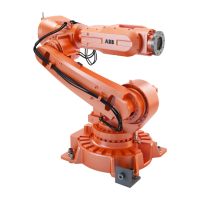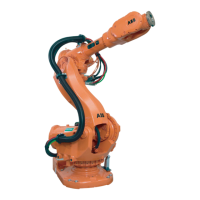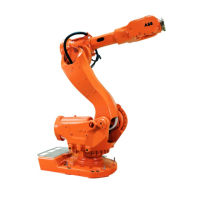[554] SpotWare Plus
44 Product Specification RobotWare Options for BaseWare OS 4.0
[554] SpotWare Plus
The SpotWare Plus package provides support for sequential welding with one or
several pneumatic on/off gun equipments, as the SpotWare package, but also welding
and full individual monitoring of up to four separate gun equipments at the same time.
SpotWare Plus features
The SpotWare Plus package contains the same features as SpotWare
but with following feature in addition:
- Possibility to weld with up to four guns at the same time.
Principles of SpotWare Plus
As in SpotWare the spotweld functions will be controlled by separate internal program
processes, which will run in parallel. For instance the robot movements, the continuous
supervision and each spotweld process will be handled in different independent pro-
gram processes. This means that if for instance the program execution and thus the
robot movements is stopped, then the weld processes and supervision will continue
until they come to a well defined process stop. For example, the welding processes will
carry on and finish the welds and open the guns, although the program has been stopped
during the weld phase.
For well defined points in the welding sequence, calls to user routines offer adaptations
to the plant environment. A number of predefined parameters are also available to
shape the behaviour of the SpotWare instruction.
The opening and closing of the guns are always executed by RAPID routines. These
gun routines may be changed from the simple on/off default functionality to a more
complex gun control and they may contain additional gun supervision.
SpotWarePlus is based on the DAP (Discrete Application Platform).
Programming principles
Both the robot movement and control of up to four spot weld processes are embedded
in the basic spot weld instructions for multiple welding, SpotML and SpotMJ.
Each spot welding process is specified by:
- Spotmdata: spot weld process data
- Gunmdata: spot weld equipment data
- The system modules SWUSRF and SWUSRC: RAPID routines and global data
for customizing purposes and data for changing of process and test behaviour.
- System parameters: the I/O Signal configuration.

